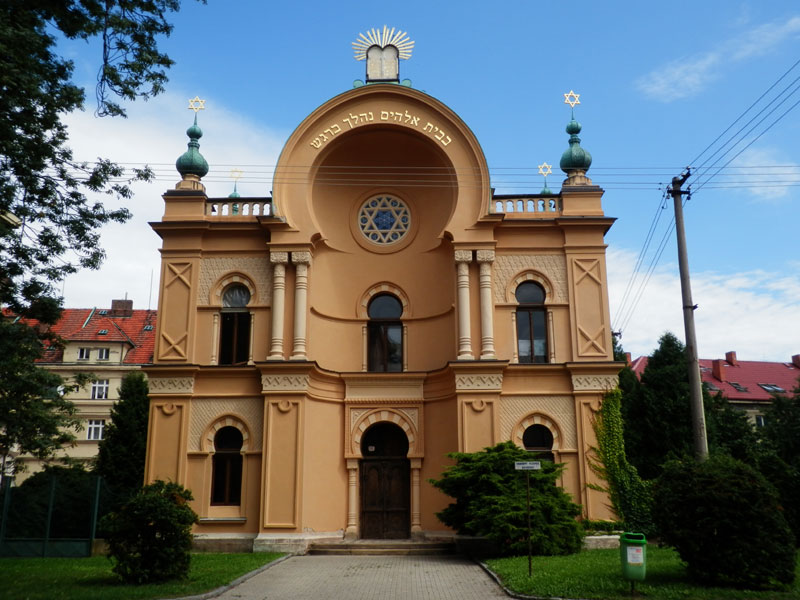Those with a healthy curiosity should make a quick detour to the small town of Cáslav, located forty-four miles southeast of the capital. Forbidden to Jews until the middle of the nineteenth century, the communities in the neighboring villages began to settle here after the Jews’ emancipation. To the northeast of the large square on Fucikova Street one can see an unusual synagogue in a neo-Moorish style with an odd rounded pediment and a beautiful painted-wood interior.

The synagogue , built in 1899, was designed by Viennese architect Wihelm Stiassny. The plan is a simple rectangle, with a west transept. The building is a singular example of the revival of the Moorish style in the 19th century. The synagogue was used as a depot during the Second World War, then as a municipal art gallery in the 1960s. In 1994, Cáslav City Council transferred ownership of the building to Prague’s Jewish community, following a campaign of claims for the restitution of looted Jewish property. As a result, the synagogue was renovated. Despite the deterioration of the building, certain original elements remained intact: the ceiling and decorations in the central nave, the columns and stuccoes, as well as certain elements of the exterior façade. Erosion was also threatening the building. Work is due to be completed by mid-2019, and the synagogue will become a municipal cultural centre.
Among the leading figures from Caslav is Milos Forman (1932-2018), a member of the Czech New Wave and director of such masterpieces as One Flew Over the Cuckoo’s Nest, Hair and Amadeus. Following the deportation and murder of his parents, he was raised by relatives. After completing his studies, he made his first films in the mid-1950s. When his film The Firemen’s Ball was banned by the authorities following the Soviet invasion in 1968, he emigrated to the United States.